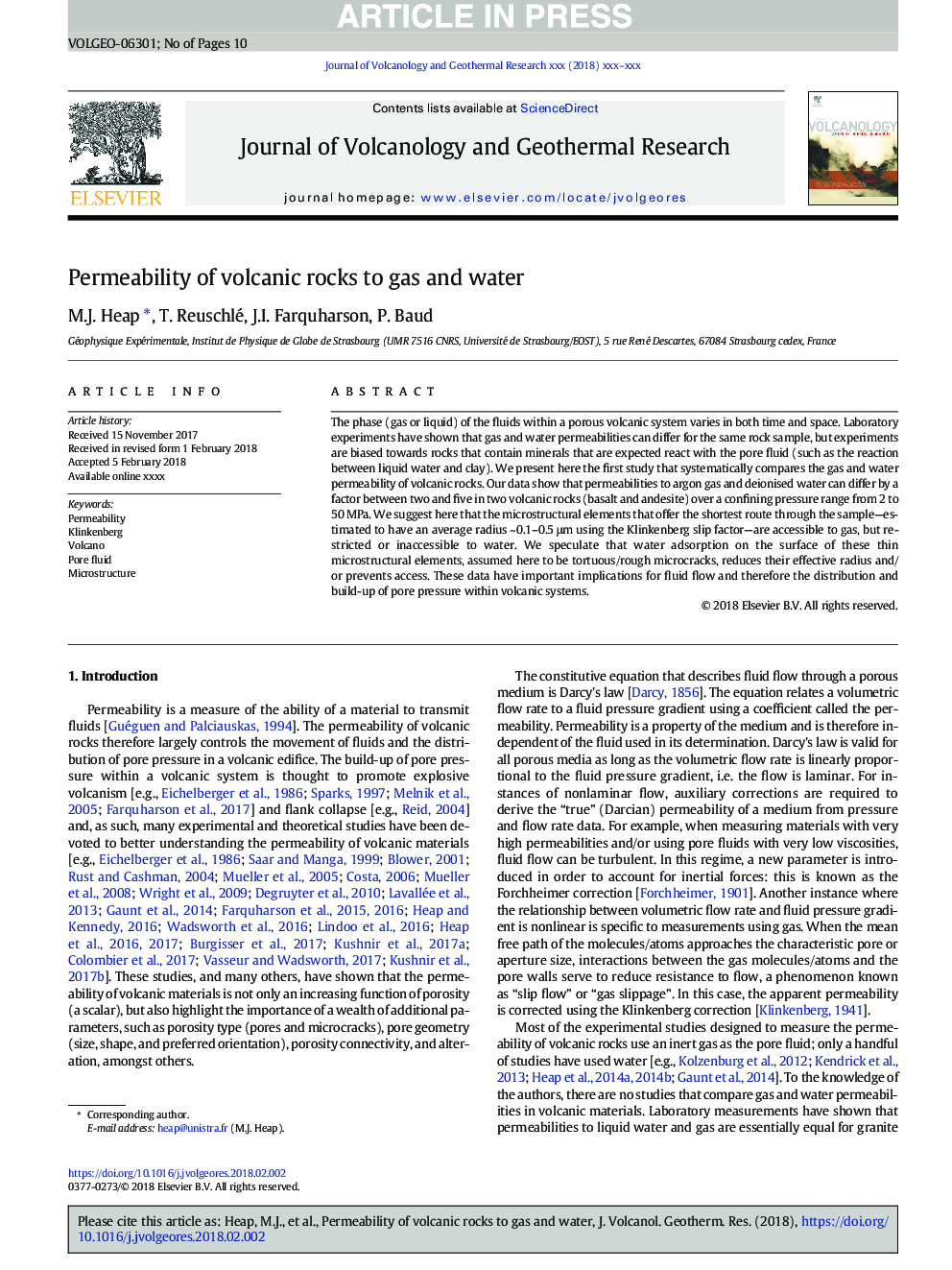| Article ID | Journal | Published Year | Pages | File Type |
|---|---|---|---|---|
| 8911356 | Journal of Volcanology and Geothermal Research | 2018 | 10 Pages |
Abstract
The phase (gas or liquid) of the fluids within a porous volcanic system varies in both time and space. Laboratory experiments have shown that gas and water permeabilities can differ for the same rock sample, but experiments are biased towards rocks that contain minerals that are expected react with the pore fluid (such as the reaction between liquid water and clay). We present here the first study that systematically compares the gas and water permeability of volcanic rocks. Our data show that permeabilities to argon gas and deionised water can differ by a factor between two and five in two volcanic rocks (basalt and andesite) over a confining pressure range from 2 to 50 MPa. We suggest here that the microstructural elements that offer the shortest route through the sample-estimated to have an average radius ~0.1-0.5 μm using the Klinkenberg slip factor-are accessible to gas, but restricted or inaccessible to water. We speculate that water adsorption on the surface of these thin microstructural elements, assumed here to be tortuous/rough microcracks, reduces their effective radius and/or prevents access. These data have important implications for fluid flow and therefore the distribution and build-up of pore pressure within volcanic systems.
Related Topics
Physical Sciences and Engineering
Earth and Planetary Sciences
Geochemistry and Petrology
Authors
M.J. Heap, T. Reuschlé, J.I. Farquharson, P. Baud,
